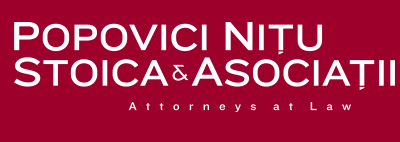- About Us
-
Expertise
- Banking & Finance
- Capital Markets
- Competition & Antitrust
- Corporate & Commercial
- Data Privacy
- Employment & Pensions
- Energy & Natural Resources
- Gambling & Betting
- Healthcare & Pharmaceuticals
- Insurance
- Intellectual Property
- International Arbitration
- Litigation
- Mergers & Acquisitions
- Project Finance/PPP, Concessions & Infrastructure
- Public Procurement
- Real Estate
- Restructuring & Insolvency
- Sports Law
- Tax
- Telecommunications, Media & Technology
- Transports & Logistics
- White Collar Compliance & Defense
- Our team
- Careers
- Publications
- News and Press
- Contact
Articles
About association in agriculture
It has become a truism that the agricultural area of Romania is highly fragmented (e.g. 13.3 million ha are being worked by 3,859,000 agricultural enterprises, of which 99.2% are enterprises without legal personality represented by small farmers – individual farms, certified natural persons, sole partnerships – with an average area of 1.95 ha/farm) and that a modern and efficient agriculture requires the association of small farmers and consolidated surfaces.

Moreover, within the public area there are a lot of discussions regarding the necessity of farmers’ association, the benefits of association (e.g. obtaining stronger positions in negotiations with seed and fertilizer suppliers or cereal buyers, in building production delivery chains or in obtaining higher subsidies from European bodies) or the measures of financial stimulus (on national or European level) of these associations.
Also, in terms of a very low degree of association, there are attempts of identifying originating factors for these facts (e.g. the laws on restoration of land ownership rights that led to fragmentation, the farmers’ lack of information), of implementing certain punitive measures for those who refuse to enter associations (e.g. decreasing agricultural subsidies) or of financial stimulus of those who would sell the land in view of consolidation.
Without challenging the absolute good-faith of these initiatives, discussions or even legislative measures towards their purpose – obtaining an efficient agriculture, we believe that at least some of the answers and explanations should be searched deeper.
Beyond aspects of general sociological order (the very low degree of social trust – 60% of Romanians do not trust their peers), which do not represent the object of this analysis, we should ask ourselves – what legal impediments may encounter 50 farmers in Oltenia or Moldova (assuming that each of them possesses 2 ha of land) who would enter an association for planting sunflower?
In our opinion, beyond any potential financial or economic difficulties, the difficulty of legally holding, or figuratively speaking, the difficulty of embracing the legal form of the ownership right or the right of use upon those certain land plots, in the framework of association, due to the lack of cadaster and real estate registration with the land book, represents the main issue.
For lack of real estate registration with the land book, it shall prove to be extremely difficult or almost impossible to include that certain land in the share capital of a company or to set up a usufruct right in favor of an agricultural partnerships or agricultural association.
Also, the lack of cadaster and real estate registration with land book of agricultural land plots entails a series of blockings regarding the land plots’ location, exchanges in view of consolidation, selling or setting up securities over them in view of financing potential agricultural projects. In addition to this, the lack of land registration and the lack of a clean record of land plots and owners may lead to issues related to proximity, multiple selling or multiple declaring of those certain areas for obtaining agricultural subsidies.
In the formal picture of the credit and the business plan, the ownership right or the right of use upon agricultural land plots must embrace the same legal forms.
Currently, the majority of the large farmers in Romania are trying to obtain, with many difficulties, areas of agricultural land as compact as possible, based on the so-called „use exchange conventions” with other farmers - a process weighted by the lack of cadaster identification data in GPS system, which would provide a precise location.
How easily could the 50 farmers obtain an area as compact as possible if their land does not present cadaster identification data? In practice, it is almost impossible.
At the moment, in Romania, of the more than 3,000 territorial and administrative units, the land registration works have reached an end in no more than 5-6 localities (according to the latest information provided by the National Agency for Cadaster and Land Registration). The process of land registration of the entire agricultural area should be a public task undertaken by the Romanian Government integrally, both financially and organizationally, as soon as possible.
Romania benefits from a proper law regarding association1, which is, however, inefficient and it eventually becomes a form not supported by a proper content as long as the terms prior to implementation are not fulfilled. It is useless if an agricultural association receives a higher subsidy per ha than a farmer with 2 ha of land, if only 5-10 of the 50 farmers can legally fructify the ownership right.
In addition to the above, we should enhance the idea that the consolidation process of the agricultural land is a matter of market evolution and maturity. Consequently, in order to obtain a consolidation as proper as possible, apart from the land registration process, the state must preserve a land market governed by clear and balanced rules (unfortunately, the latest legal initiatives kept in mind for 2014 appear to be rather restrictive, leading to a foreclosure).
________________________
1 According to the governing law, Romanian agriculture includes the following forms of association: agricultural companies (Law no. 36/1991 on agricultural companies and other forms of association in agriculture), agricultural associations (Government Ordinance no. 26/2000 on associations and foundations, approved by Law no. 246/2005), agricultural partnerships (Law on agricultural partnership no. 566/2004) and groups of producers (Ordinance no. 37/2005 on the recognition and operation of groups and producer organizations, for marketing of agricultural and forestry products).
Download Article










